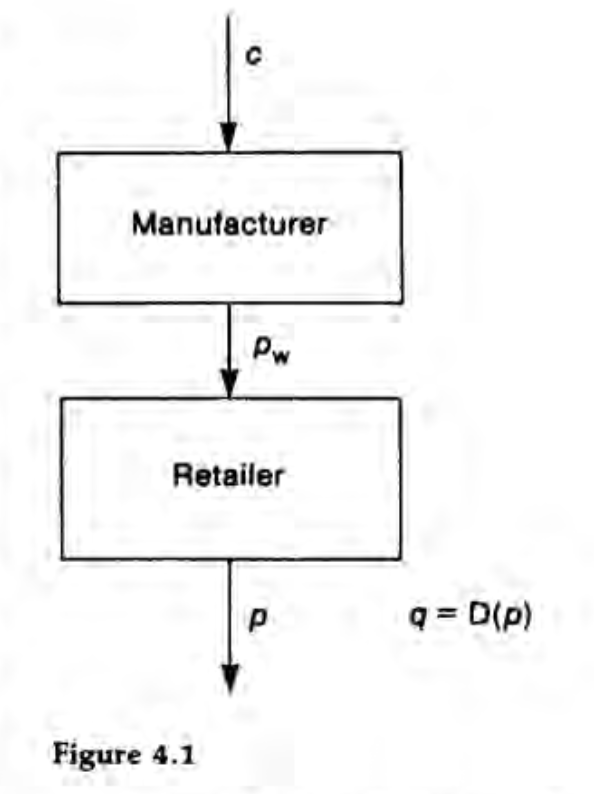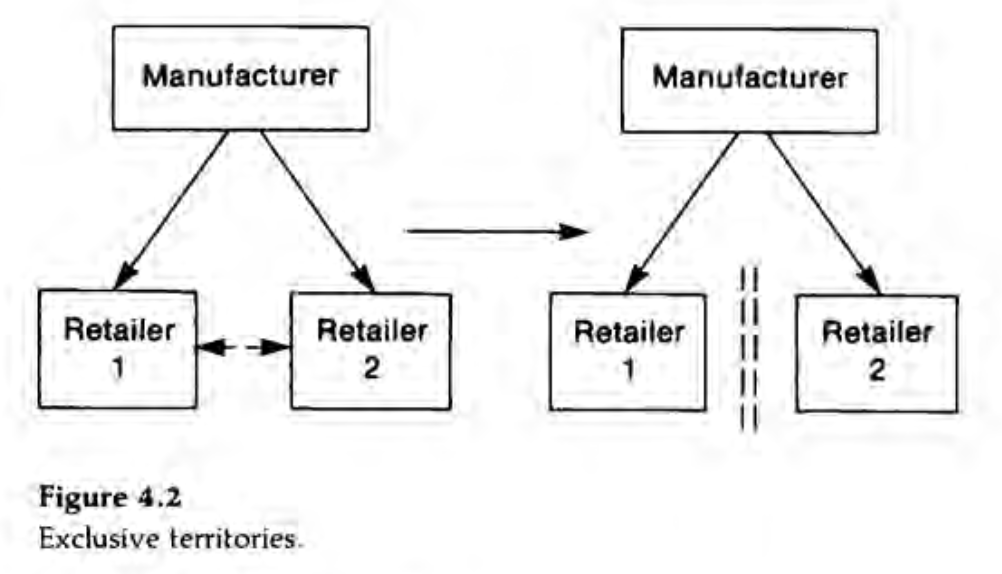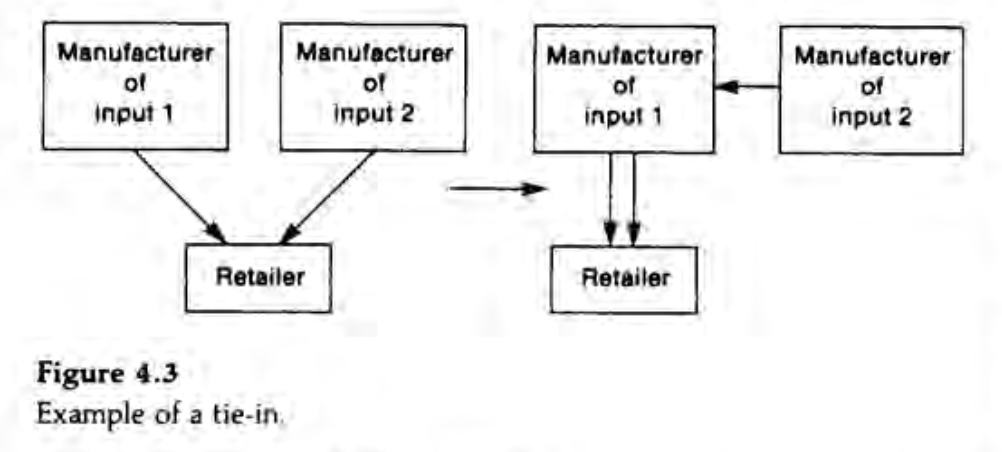4.1 Linear Prices versus Vertical Restraints
4.1.1 Basic Framework
- A single supplier, called the monopolist or the manufacturer, produces an intermediate good at a constant unit cost \(c\).
- He is the only producer of this good.
- He sells it to a single downstream firm, called the retailer.
- The retailer resells the product.
- \(p_{w}\) denotes the wholesale price and \(p\) the consumer price.
- \(q\) denotes the quantity bought by the retailer; it also denotes the final consumption if the retailer does not throw away any of the intermediate good.
- The consumers’ demand function is denoted \(q = D(p)\).

4.1.2 Intrabrand Competition
- Introduce the possibility of competition among several retailers on the same market.
- New type of restraint: exclusive territories

4.1.4 Interbrand Competition
- The retailer may sell goods that are close substitutes for the good supplied by the manufacturer.
- The manufacturer may then impose exclusive dealing on the retailer, which prevents him form selling goods that compete directly with the manufacturer’s product.


